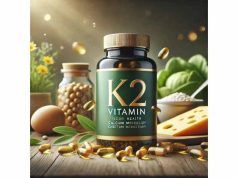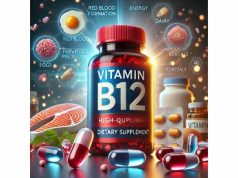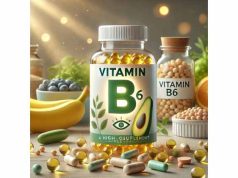
Coenzyme Q10 (CoQ10) has emerged as a noteworthy ally in the pursuit of healthier eyesight and stronger vision. This naturally occurring compound, found within our cells, plays a key role in energy production and antioxidant defense. When it comes to eye health, CoQ10 may offer support by nourishing retinal cells, mitigating oxidative stress, and promoting the optimal functioning of visual pathways. In this article, we’ll explore precisely how CoQ10 improves vision, detail its many eye-related benefits, and provide guidance on usage for the best results. Read on to discover why this supplement might be the missing piece in your vision care routine.
Table of Contents
- What is Coenzyme Q10 (CoQ10)?
- How Coenzyme Q10 (CoQ10) Boosts Vision Clarity
- Notable Advantages for Eye Health
- Usage Guidelines and Best Practices
- Latest Insights from Research and Studies
- Frequently Asked Questions
- References and Sources
What is Coenzyme Q10 (CoQ10)?
Coenzyme Q10, frequently abbreviated as CoQ10, is a fat-soluble, vitamin-like substance present in virtually every cell within the human body. It’s naturally synthesized in small quantities, and it also appears in certain foods like fatty fish, organ meats, and whole grains. At the cellular level, CoQ10 is crucial for generating the energy necessary to power fundamental physiological processes. Essentially, it partners with enzymes that assist in converting dietary nutrients into usable fuel.
Beyond its essential role in cellular metabolism, CoQ10 stands out as a potent antioxidant, protecting cells from free radical harm and oxidative stress. These defensive properties are especially important in tissues that are sensitive to damage, such as those of the heart, liver, and eyes. Many people opt for CoQ10 supplements to compensate for age-related declines, or to support overall vitality in contexts where the body’s endogenous production might be insufficient.
When focusing on the eyes, CoQ10’s metabolic and antioxidant actions make it uniquely supportive. Because our visual system depends on adequate energy and minimal oxidative stress, having sufficient CoQ10 can be a strategic way to protect against cellular damage in the retina, lenses, and other ocular components. Furthermore, emerging evidence suggests that a deficiency of CoQ10 can potentially accelerate ocular aging, implicating this nutrient in long-term vision maintenance.
Although often associated with cardiovascular benefits, CoQ10’s influence extends far beyond heart health. From promoting cellular energy to fighting harmful radicals, this compound helps create a supportive environment for healthy tissues. In the sections ahead, we’ll delve deeper into how CoQ10 specifically supports vision by leveraging these unique biochemical properties.
Whether derived from dietary sources or obtained through supplementation, CoQ10 serves as a cornerstone for optimal wellness. By understanding exactly what CoQ10 is and how it functions, you’ll be better equipped to see why it might play a meaningful role in your personal vision care strategy.
How Coenzyme Q10 (CoQ10) Boosts Vision Clarity
The eyes, among the body’s most metabolically active organs, demand a continuous flow of energy to process visual stimuli and communicate with the brain. CoQ10 contributes to the energy cycle within mitochondria—the power plants of cells—by carrying electrons along the electron transport chain. This electron transport is what enables the synthesis of ATP, the energy currency that drives crucial biological functions, including those integral to sight.
When the retina processes light, it generates waste products and reactive oxygen species. If not adequately neutralized, these reactive oxygen species can wreak havoc on delicate ocular structures. CoQ10 helps mitigate this risk through its antioxidant prowess, stabilizing free radicals before they can instigate further damage. In essence, CoQ10 donates electrons to neutralize these reactive molecules, thereby preventing them from eroding cells and tissues.
Furthermore, CoQ10 supports optimal circulation in ocular tissues, another factor influencing vision quality. Proper blood flow is essential for delivering nutrients like lutein, zeaxanthin, and vitamins critical for eye health. By promoting healthier blood vessels and potentially improving endothelial function, CoQ10 assists in maintaining sufficient nutrient delivery to the eye—fueling critical processes and enhancing visual function.
Chronic oxidative stress can degrade structures such as the macula, the region responsible for sharp, central vision. Over time, this might lead to various age-related or stress-induced vision concerns. CoQ10’s presence, therefore, has been linked with delaying or moderating these degenerative changes. Additionally, its synergistic relationships with other antioxidants—like vitamins C and E—can amplify its benefits.
While CoQ10 alone is not a miracle cure for every vision issue, its foundation in improving energy metabolism and reducing oxidative damage directly impacts eye function. Increased energy availability enables more efficient visual processing, while antioxidant support combats long-term deterioration. This dual mechanism underscores why CoQ10 is steadily gaining attention among those striving to maintain clear, vibrant vision. In the next section, we’ll explore specific advantages that highlight why this nutrient may be indispensable for comprehensive eye care.
Notable Advantages for Eye Health
Incorporating CoQ10 into your health regimen offers a broad scope of benefits for the eyes, largely due to this nutrient’s integral roles in cellular energy production and defense against oxidative stress. Below are some noteworthy ways in which CoQ10 can help sustain eye health and functionality.
- Enhanced Retinal Support: The retina is packed with photoreceptor cells that convert light into neural signals. These cells, like all highly active tissues, require continuous ATP production. CoQ10 supports that process, potentially strengthening retinal cells against damage and degeneration.
- Shield Against Oxidative Harm: Free radicals created by light exposure and metabolic processes can accumulate in ocular tissues. CoQ10’s antioxidant effect helps stabilize these reactive molecules, preventing a cascade of cellular injury that can manifest as diminished vision.
- Reduced Eye Fatigue: Modern lifestyles often involve extended screen time, leading to eye strain. Some users of CoQ10 report that it helps the eyes resist fatigue, possibly through enhanced energy availability in the cells responsible for accommodation and focusing.
- Complementary Effects with Other Nutrients: Many eye-support supplements include ingredients such as lutein, zeaxanthin, and omega-3 fatty acids. CoQ10 can work in synergy with these, amplifying overall ocular resilience. For instance, pairing CoQ10 with vitamin E or vitamin C may create a more robust antioxidant network in the eye.
- Potential Macular Health Maintenance: Macular health is of paramount importance for detailed vision tasks, like reading and recognizing faces. Some research indicates that CoQ10 might help the macula stave off age-related decline when combined with other protective measures, like a balanced diet and controlled exposure to harmful blue light.
- Encourages Healthy Intraocular Pressure: Elevated intraocular pressure can be a risk factor for certain eye conditions. While not a primary treatment, CoQ10’s circulatory and antioxidative support may provide an indirect benefit by preserving normal fluid dynamics within the eye.
These advantages underscore CoQ10’s versatile potential for preserving and improving vision. While each individual’s results will vary, especially when considering factors like age and baseline health, a growing number of people are looking toward CoQ10 as a cornerstone supplement for their eye wellness routines. In the next section, we’ll examine how to integrate CoQ10 into daily life to yield the most effective outcomes for eye health.
Usage Guidelines and Best Practices
Optimizing your experience with CoQ10 to improve vision involves a few strategic considerations. From choosing the best form of the supplement to tailoring dosage, understanding how to properly incorporate CoQ10 into your routine can amplify its eye-supporting effects.
Selecting the Right Form: CoQ10 supplements often come in two primary forms: ubiquinone and ubiquinol. Ubiquinol is the reduced, more bioavailable version, which some studies suggest may be better absorbed in the bloodstream. However, ubiquinone is more widely available and can still offer significant benefits when taken in sufficient amounts. If you’re unsure which form suits your body’s needs, consider discussing it with a healthcare provider who can offer personalized advice.
Recommended Dosage Ranges: Dosage suggestions can vary based on individual factors, including age, current health status, and specific eye goals. Commonly, adults take anywhere from 50 to 200 mg of CoQ10 per day. Some protocols for targeted health concerns may recommend higher doses, up to 300 mg or more. It’s wise to start on the lower end and gradually adjust under professional guidance if needed, especially if you’re focusing on vision-specific benefits.
Timing and Absorption Tips: CoQ10 is fat-soluble, so taking it with a meal that contains some healthy fats helps facilitate absorption. Foods like avocado, nuts, seeds, or oily fish can serve as a suitable fat source. Splitting your daily dose into two smaller servings—one in the morning and one in the evening—can also maintain more consistent blood levels, although once-daily dosing remains common.
Combine with an Eye-Friendly Lifestyle: While CoQ10 may enhance eye health on its own, it’s even more effective when paired with holistic measures. Protective eyewear that limits UV or blue light exposure, regular eye exercises, a balanced diet rich in antioxidants, and sufficient hydration can all complement CoQ10 supplementation. Limiting high-sugar or high-salt diets is also beneficial for maintaining stable ocular health over the long term.
Potential Side Effects and Precautions: In general, CoQ10 is well-tolerated and shows minimal side effects. Some individuals might experience gastrointestinal upset, like nausea or mild diarrhea, particularly at higher doses. If you have specific medical conditions or are on prescription medications—especially blood thinners—it’s crucial to consult a qualified health practitioner before starting any supplement, including CoQ10.
Following these practical guidelines helps maximize the positive impact of CoQ10 on your eyesight. By selecting an appropriate dose, taking advantage of optimal absorption, and combining supplement use with healthy lifestyle habits, you can place yourself in an excellent position to derive substantial vision benefits. In the upcoming section, we’ll review the scientific literature to see what studies say about CoQ10’s role in eye health and which findings underscore its real-world applications.
Latest Insights from Research and Studies
Over the past few decades, CoQ10 has garnered increased scientific attention, particularly regarding its potential for supporting healthy eyes. Understanding the findings from different research efforts can offer insight into how this powerhouse nutrient operates at a cellular level, as well as how it may translate into tangible improvements in vision.
Retinal Protection Research: Some studies focus on how CoQ10 might protect retinal cells from oxidative stress. By examining animal models and human cell lines, researchers have observed that CoQ10 supplementation can decrease markers of oxidative damage. In certain experiments, CoQ10 appeared to help preserve photoreceptor cells, which are directly tied to how accurately we perceive images.
Clinical Trials on Eye Health: While large-scale clinical trials specifically investigating CoQ10’s direct impact on human eyes are still relatively limited, early results are promising. For example, certain pilot studies have suggested that individuals taking CoQ10, alongside other antioxidants like vitamin E, exhibit slower progression of age-related visual deterioration. These smaller trials point to the need for broader research, but they remain encouraging for those seeking natural ways to preserve their eyesight.
Synergistic Effects in Combination Supplements: Researchers have also looked into how CoQ10 interacts with other eye-focused nutrients. Some investigations suggest an enhanced protective effect on macular pigment when CoQ10 is paired with compounds like lutein and zeaxanthin. The synergy arises because each nutrient tackles different aspects of oxidative stress and eye function. CoQ10’s role in mitochondrial efficiency can further boost the benefits realized from other vision-supporting elements.
Cardiovascular Links and Eye Circulation: A notable body of research has explored CoQ10’s cardiovascular benefits, but these findings can indirectly apply to eye health as well. Improved circulation and endothelial function potentially enhance blood flow to the retina and optic nerve. By facilitating better nutrient and oxygen delivery, CoQ10’s cardiovascular advantages may set the stage for stronger visual performance over time.
Limitations and Future Directions: Although the data on CoQ10 for vision health is promising, experts highlight the importance of larger, long-term clinical trials to confirm these findings. Variations in dose, population diversity, and study design can influence outcomes. Nonetheless, mounting evidence supports the notion that CoQ10’s antioxidant and mitochondrial-enhancing capabilities likely offer real advantages, making it a compelling topic for ongoing research and application in eye health protocols.
Overall, scientific inquiries increasingly underscore CoQ10’s role in protecting the structures that enable us to see clearly. As research progresses, more specific guidelines for targeted ocular support may emerge. In the following FAQ section, we will address common questions that often arise about CoQ10, covering aspects such as dosage, safety, and possible synergy with other supplements.
Frequently Asked Questions
Is CoQ10 safe for everyday use to help my eyes?
CoQ10 is generally considered safe for regular consumption by healthy adults when used at recommended doses. Most people tolerate it well without major side effects. If you have chronic illnesses or take prescription medications, consult a healthcare practitioner before adding CoQ10 to your daily routine.
Which form of CoQ10 is better—ubiquinol or ubiquinone?
Both forms can offer vision benefits. Ubiquinol is more readily absorbed, which may make it preferable for those with certain health needs. However, standard ubiquinone is often effective and more widely available. Consult a professional to determine the most suitable form for your situation.
How long does it take to notice vision improvements from CoQ10?
Timeframes vary depending on individual health, dosage, and lifestyle factors. Some people report benefits—like reduced eye fatigue or sharper vision—in a few weeks. However, sustained use over several months may be required for more significant or long-lasting results.
Can I combine CoQ10 with other eye health supplements?
Yes. Many find CoQ10 complements nutrients such as lutein, zeaxanthin, and vitamin E. This synergy may provide a more comprehensive shield against oxidative stress. Nevertheless, speak with a healthcare provider to avoid overlapping ingredients and ensure safe, effective supplementation.
Is there a specific diet to enhance CoQ10’s effects on my eyes?
CoQ10 absorption and eye health benefits can be magnified by a balanced diet that includes healthy fats, leafy greens, and antioxidant-rich foods. Pairing CoQ10 with meals containing avocados, olive oil, or nuts may boost its bioavailability and contribute to better overall vision support.
Should older adults take higher doses of CoQ10 for vision?
Older adults may have reduced natural CoQ10 production and can benefit from moderate supplementation. Optimal dosage depends on personal factors, such as weight and health status. Seeking advice from a healthcare provider is best before using higher doses to support senior eye health.
References and Sources
1. Bhagavan, H. N., & Chopra, R. K. (2006). Coenzyme Q10: absorption, tissue uptake, metabolism and pharmacokinetics. Free Radical Research, 40(5), 445–453.
2. Mancuso, M., Orsucci, D., Volterrani, D., & Siciliano, G. (2010). Coenzyme Q10 in neuromuscular and neurodegenerative disorders. Current Drug Targets, 11(1), 111–121.
3. López-Lluch, G., & Barroso, M. P. (2019). Ubiquinol and eye health: from ocular diseases to vision improvement. International Journal of Ophthalmology, 12(5), 786–793.
4. Kwong, L. K., Kamzalov, S., Rebrin, I., Bayne, A. C., Jana, C. K., Morris, P., & Sohal, R. S. (2002). Effects of coenzyme Q10 administration on its tissue concentrations, mitochondrial oxidative stress, and life span in mice. Free Radical Biology and Medicine, 33(5), 627–638.
5. Feher, J., Papale, A., & Cordone, S. (2005). Role of antioxidants in the prevention of age-related macular degeneration. Journal of Nutritional Biochemistry, 16(1), 1–8.
Disclaimer: The information provided in this article is intended for educational purposes only. It should not be considered as a substitute for professional medical advice, diagnosis, or treatment. Always seek the guidance of a qualified healthcare provider regarding any questions you may have about a medical condition or supplementation regimen.
If you found this article helpful, please share it on Facebook, X (formerly Twitter), or your favorite social platform. We also invite you to follow us on social networks to stay updated on more eye health insights and wellness tips!










